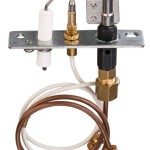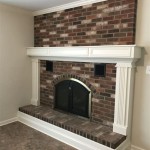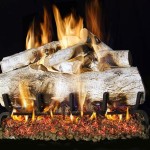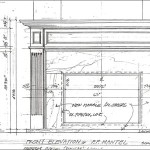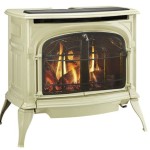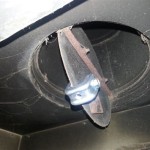How To Accessorize A Fireplace Mantel
A fireplace mantel often serves as the focal point of a living room or family room. Proper accessorizing can enhance its presence and contribute significantly to the overall aesthetic of the space. This article outlines key strategies and considerations for effectively accessorizing a fireplace mantel.
Establishing a Foundation: Understanding Scale and Proportion
Before selecting decorative items, it is crucial to consider the size and scale of the mantel itself. A large, imposing mantelpiece can accommodate larger objects and more elaborate arrangements, while a smaller mantel requires a more restrained approach. Proportion is essential; oversized items on a small mantel can appear overwhelming, while diminutive objects on a large mantel can get lost.
The Importance of a Focal Point
Creating a focal point anchors the arrangement and draws the eye. A large mirror, a striking piece of artwork, or a decorative architectural element can serve as an effective focal point. The chosen focal point should be proportionate to the mantel and complement the overall design style of the room.
Layering and Height Variation for Visual Interest
Layering items of varying heights creates depth and visual interest. Consider using a combination of tall candlesticks, shorter vases, and decorative boxes. Placing taller items towards the back and shorter items towards the front creates a visually appealing layered effect. This prevents the arrangement from appearing flat and monotonous.
Balancing Symmetry and Asymmetry
Symmetry offers a classic, formal aesthetic. Matching items placed on either side of the focal point create a sense of balance and order. Asymmetry, on the other hand, provides a more relaxed and dynamic feel. This can be achieved by grouping items of varying heights and sizes on one side of the mantel and balancing them with a single larger item or a different grouping on the other side. The choice between symmetry and asymmetry depends on personal preference and the desired overall aesthetic.
Incorporating Greenery and Natural Elements
Introducing natural elements, such as plants, branches, or flowers, adds a touch of life and freshness to the mantel. Potted plants, trailing vines, or seasonal floral arrangements can soften the hard lines of the mantel and create a connection with the outdoors. Consider the scale of the greenery and ensure it complements the other decorative elements.
Utilizing Decorative Objects and Collections
Decorative objects, such as sculptures, vases, candlesticks, books, and framed photographs, can personalize the mantel and reflect individual interests. Collections of similar items, such as ceramic figurines or vintage clocks, can create a cohesive and visually appealing display. Care should be taken to avoid overcrowding the mantel; select a few key pieces that complement each other and the overall design.
Considering Seasonal Decorations
Changing the mantel décor seasonally allows for a refreshing update to the room. Seasonal elements, such as pumpkins and gourds in the fall, evergreen boughs and ornaments during the winter holidays, and fresh flowers in the spring, can enhance the mantel and reflect the spirit of the season. These seasonal changes can be simple updates or more elaborate transformations depending on personal preference.
Color Coordination and Contrast
The colors of the chosen accessories should harmonize with the existing color scheme of the room. Consider using a cohesive color palette or incorporating contrasting colors to create visual interest. Repeating colors found elsewhere in the room creates a sense of unity and flow. Metallic accents, such as gold, silver, or brass, can add a touch of elegance and sophistication.
Texture and Material Considerations
Varying textures and materials adds depth and visual appeal. Combining smooth surfaces with rough textures, such as wood, metal, and ceramics, creates a dynamic and engaging display. Consider the existing materials in the room and choose accessories that complement or contrast them effectively.
Practical Considerations: Functionality and Safety
While aesthetics are important, functionality and safety should also be considered. Ensure that any candles used are placed safely away from flammable materials and that any hanging items are securely fastened. If the fireplace is in use, ensure that decorative items are placed far enough away from the heat source to prevent damage.
Regularly Reassessing and Refreshing the Arrangement
The arrangement on the mantel should not be considered static. Periodically reassessing the arrangement allows for adjustments and updates to keep the display fresh and interesting. This may involve swapping out items, adding new pieces, or simply rearranging existing elements.
The Mantel as a Reflection of Personal Style
Ultimately, the most successful mantel arrangements are those that reflect the personal style and preferences of the homeowner. There are no hard and fast rules; the key is to experiment with different arrangements and find what works best for the space and the individual's aesthetic sensibilities. By considering these guidelines, individuals can create a visually appealing and personalized focal point in their living space.

How To Decorate A Mantel Like Pro Stonegable

How To Decorate A Fireplace Mantel

How To Decorate A Mantel Like Pro Stonegable

How To Decorate A Long Mantel Before And After Courtney M Browning

How To Decorate A Mantel Like Pro Stonegable

35 Fireplace Mantel Ideas For A Heavenly Hearth Bored Panda

How To Decorate A Mantel Like Pro Easy Styling Tips From Tidbits Twine

Fireplace Mantel Decorating Mistakes How To Fix Them

How To Decorate A Mantel Like Pro Stonegable

How To Style A Fireplace Mantel Styling Ideas Tips Tricks 2024
Related Posts

